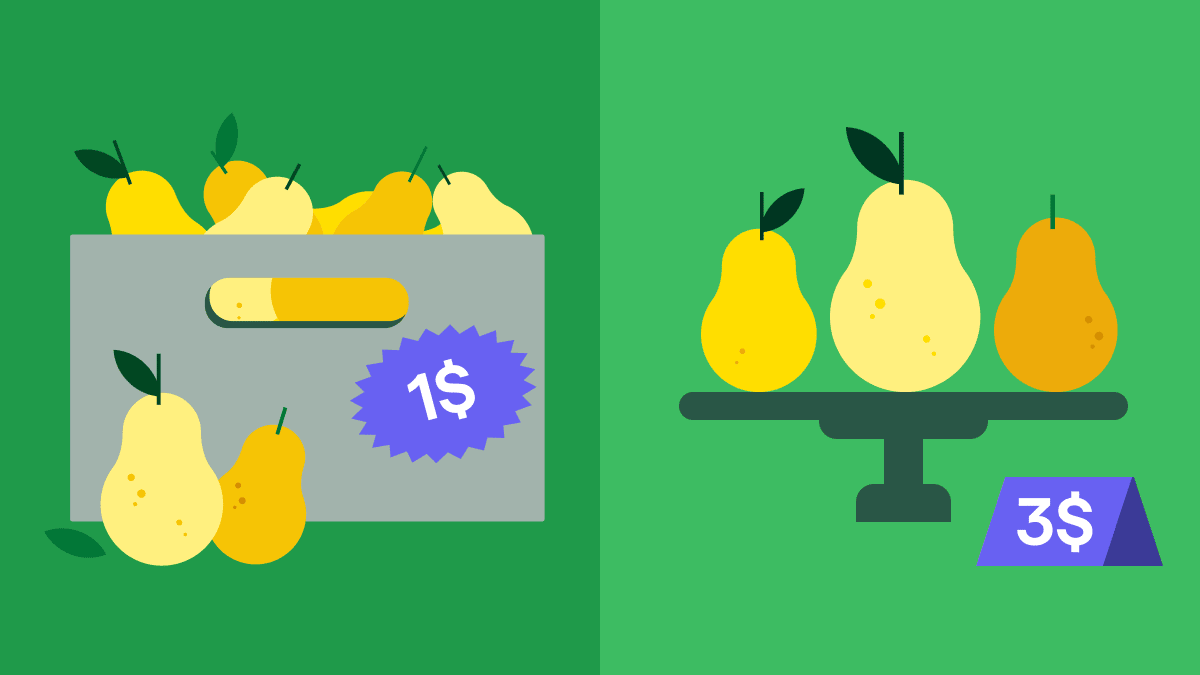Customer adoption is more than just getting someone to sign up, it’s about helping them realize the full value of your product as quickly and smoothly as possible. When users understand how to use your solution and see results early, they’re far more likely to stay, succeed and advocate for your brand.
The customer adoption guide breaks down the process into clear, manageable stages. You’ll learn how to identify friction points, track the right metrics and apply proven strategies to improve onboarding, engagement and long-term retention.
Whether you’re launching a new SaaS product or refining your customer success strategy, strong customer adoption is key to driving growth and loyalty.
Customer adoption refers to the process of turning new users into active, long-term customers. It focuses on how people begin using a product, discover its value and integrate it into their workflows.
The adoption process often starts after the initial sale. Key stages include onboarding, first use, feature engagement and routine usage. Each step builds familiarity and confidence, ensuring customers not only understand the product but continue using it to solve real problems.
Successful adoption reduces churn, increases lifetime value and boosts referrals. It also strengthens alignment across marketing, sales and customer success by shifting the focus from acquisition to sustained impact.
Why customer adoption matters
Customer adoption reflects how successfully users integrate your product into their daily operations. It’s not just about activation, it’s about continued usage, growing confidence and expanding value over time. When adoption is high, customers are more likely to renew, upgrade to higher tiers, refer peers and explore new features.
Low adoption, on the other hand, signals deeper issues. It often stems from confusing onboarding experiences, unclear value messaging or a lack of support post-signup. Even the best products can struggle if users don’t understand how to use them or why they matter, creating churn risk and reducing the long-term return on investment (ROI).
A well-defined adoption process helps users reach outcomes faster. It turns signups into long-term success through clear onboarding, support and engagement.
As Satya Nadella put it, “We’ve seen two years’ worth of digital transformation in two months,” highlighting how quickly customers must adapt and why guiding that journey matters.
The customer adoption process explained
Customer adoption typically unfolds in three phases: onboarding, engagement and retention.
Each stage builds on the last, starting with the first login, progressing to core feature use and ultimately driving habitual usage. Setting clear milestones helps track where customers are in their journey and where support may be needed.
Visualizing the adoption process in a customer relationship management (CRM) tool or customer success platform gives teams a real-time view of user behaviour. Users can quickly spot drop-off points, delayed activations or high-performing segments.
Refining each stage based on feedback, usage data and lifecycle triggers creates a more personalized and efficient experience. Small adjustments, like tailored onboarding content or targeted follow-ups, can significantly improve adoption rates and long-term retention.
Note: According to McKinsey’s 2024 B2B Pulse Survey, buyer preferences are evenly split across in-person, remote and self-service. Reflecting this in your adoption strategy, by offering guided, virtual or self-led onboarding helps users engage on their terms and improves retention.
Stages in the customer adoption process
The customer adoption process moves through several distinct stages. Each one plays a critical role in building user confidence and encouraging long-term usage.
Stage | Description |
Onboarding | The first phase introduces the product and sets expectations. Effective onboarding includes guided setups, walkthroughs and access to help resources. |
First value | Users achieve an early, meaningful outcome. The moment is pivotal. Those who see value quickly are far more likely to continue and explore further. |
Ongoing engagement | After early wins, users begin to discover features that align with broader goals. Timely nudges and in-app prompts help maintain momentum and deepen usage. |
Adoption maturity | The product becomes part of the user’s daily workflow or routine. This phase benefits from retention strategies, proactive support and advanced education to drive loyalty and upsell potential. |
Knowing which stage a user is in allows your team to tailor communication, support and product experiences to maximize adoption at every touchpoint.
How to accelerate adoption
Effective customer adoption starts with personalization. Tailor the onboarding experience based on user role, use case or behavior. Welcome emails, product walkthroughs and in-app checklists should guide new users through the product’s most valuable features.
It’s recommended to use behavior-based triggers to encourage engagement beyond the first login. For example, if a user completes a key action, surface a relevant next step or offer a tip to deepen usage. Timely check-in emails or customer success calls can also help reinforce value and quickly resolve any confusion or roadblocks users may face.
Finally, highlight milestones and outcomes that matter to the user. Whether it’s hitting usage goals, inviting team members or automating a task, celebrating progress makes the product feel valuable.
Common adoption challenges and solutions
If users feel overwhelmed during onboarding, break the experience into smaller, guided steps with clear progress indicators. Rather than introducing every feature at once, focus on showing the most relevant tools first based on the user’s goals or role.
Many teams rely too heavily on email nudges to encourage adoption, but these can be easy to overlook or mistimed. Embedding in-product prompts or scheduling outreach based on usage patterns and real-time customer observations helps reduce drop-off and improve long-term adoption.
- Richard Tallboy, CIO, Wagamama
With B2B buyers now engaging across an average of 10 channels during their journey, supporting adoption through multiple touchpoints is no longer optional. Teams that build seamless, omnichannel experiences are better equipped to maintain engagement and reduce drop-off.
Why strong adoption benefits growth
Well-executed customer adoption increases customer lifetime value, reduces churn and boosts referral rates. When users see value early, they gain confidence, trust the product and are more likely to stick around. That early success lays the groundwork for long-term loyalty and ongoing engagement.
For subscription businesses, adoption is central to sustainable and scalable growth. Products that are embedded in daily workflows create habits, not just usage. Satisfied users convert, renew and become powerful advocates who drive organic growth through word-of-mouth and referrals.
How to drive successful customer adoption
Turning signups into active users requires more than onboarding flows. Success depends on guiding users to value with coordinated support across the customer journey.
Start with clear success criteria: what should the user achieve in week one, month one and beyond? Track progress and adjust messaging based on behavior, not just time-based triggers.
Cross-functional alignment makes a difference. When product, sales and success teams operate from the same data, they can proactively engage users, address blockers early and deliver a more consistent experience.
Common adoption roadblocks and how to solve them
Successful customer adoption often stalls due to a few repeatable issues. Spotting and addressing these early helps boost retention and long-term satisfaction.
Unclear onboarding paths: When users are unsure what to do next, engagement drops. To create momentum, use structured checklists, welcome flows and step-by-step onboarding.
Feature overload: Presenting too many options at once can overwhelm new users. Instead, introduce key features first, then gradually reveal more advanced functionality.
Lack of follow-up: Without timely check-ins or nudges, users may disengage. Use automated reminders, milestone notifications or invite-only training to re-engage at key points.
No success metrics: If teams don’t track adoption key performance indicators (KPIs), it’s difficult to measure progress or spot friction. To stay aligned, assign adoption tasks and track milestones using tools like Pipedrive.
Proactively resolving these blockers leads to higher product satisfaction, stronger user outcomes and scalable growth over time.
How Pipedrive supports stronger customer adoption
Pipedrive gives teams the tools to manage every stage of the customer adoption journey, from initial onboarding to long-term engagement.
The tool’s visual pipelines make it easy to track onboarding milestones, usage triggers and support interactions – all essential parts of effective customer management. By assigning activities to each phase of adoption, teams can standardize the process while staying responsive to individual user needs.
Pipedrive also integrates with email, scheduling and automation tools, ensuring timely follow-ups, engagement campaigns and support check-ins happen without delay.
As adoption data flows into the CRM, businesses gain a real-time view of user health, helping reduce churn and improve retention.
Final thoughts
Customer adoption is the bridge between delivering a product and creating a sustainable, revenue-driving ecosystem. A structured process, data-led engagement and value-driven onboarding transform casual users into dedicated customers.
Improving adoption strengthens retention and deepens customer lifetime value. A well-planned and measurable adoption process helps turn day-one value into long-term growth.






